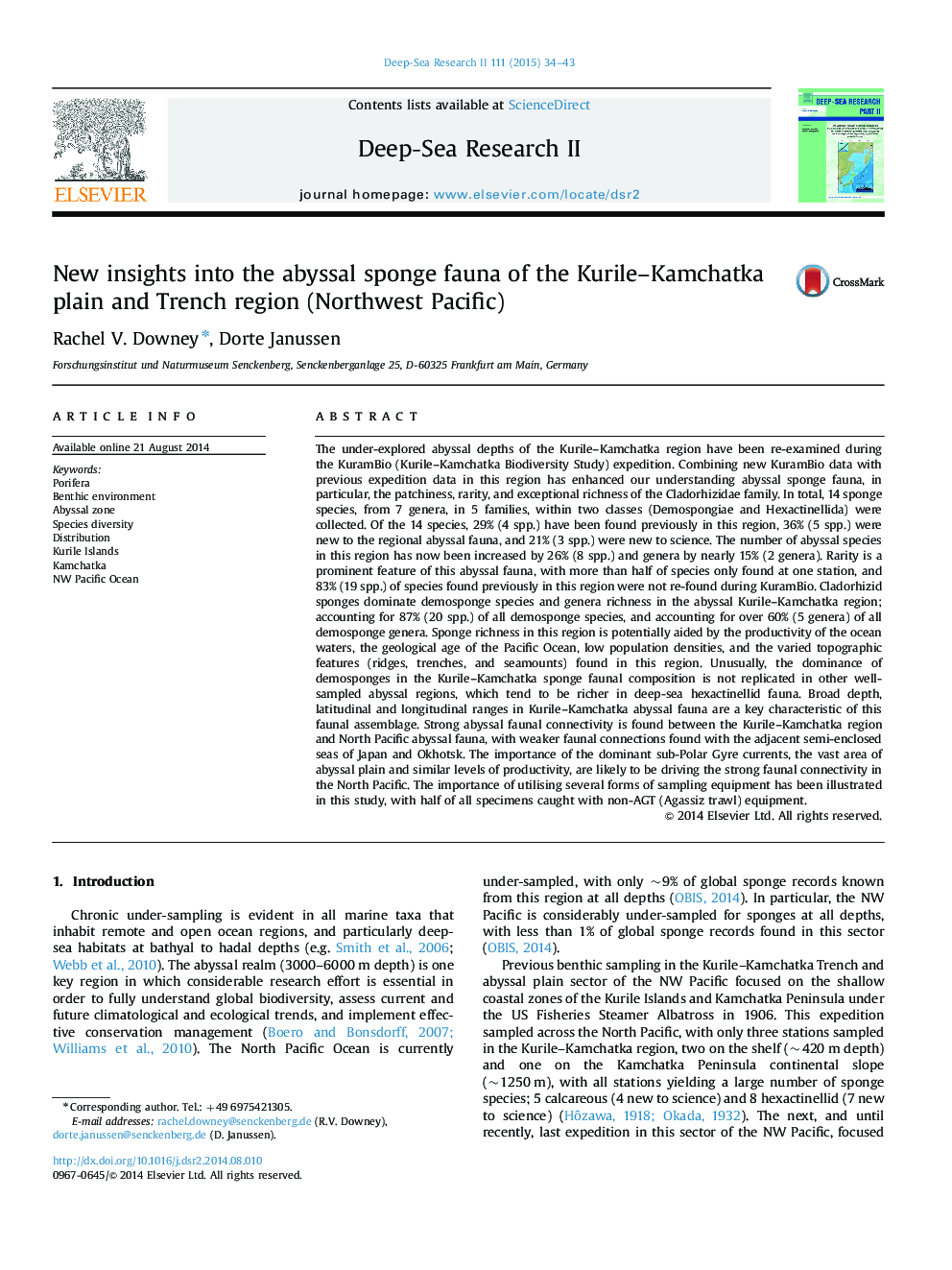| کد مقاله | کد نشریه | سال انتشار | مقاله انگلیسی | نسخه تمام متن |
|---|---|---|---|---|
| 4536277 | 1626429 | 2015 | 10 صفحه PDF | دانلود رایگان |
The under-explored abyssal depths of the Kurile–Kamchatka region have been re-examined during the KuramBio (Kurile–Kamchatka Biodiversity Study) expedition. Combining new KuramBio data with previous expedition data in this region has enhanced our understanding abyssal sponge fauna, in particular, the patchiness, rarity, and exceptional richness of the Cladorhizidae family. In total, 14 sponge species, from 7 genera, in 5 families, within two classes (Demospongiae and Hexactinellida) were collected. Of the 14 species, 29% (4 spp.) have been found previously in this region, 36% (5 spp.) were new to the regional abyssal fauna, and 21% (3 spp.) were new to science. The number of abyssal species in this region has now been increased by 26% (8 spp.) and genera by nearly 15% (2 genera). Rarity is a prominent feature of this abyssal fauna, with more than half of species only found at one station, and 83% (19 spp.) of species found previously in this region were not re-found during KuramBio. Cladorhizid sponges dominate demosponge species and genera richness in the abyssal Kurile–Kamchatka region; accounting for 87% (20 spp.) of all demosponge species, and accounting for over 60% (5 genera) of all demosponge genera. Sponge richness in this region is potentially aided by the productivity of the ocean waters, the geological age of the Pacific Ocean, low population densities, and the varied topographic features (ridges, trenches, and seamounts) found in this region. Unusually, the dominance of demosponges in the Kurile–Kamchatka sponge faunal composition is not replicated in other well-sampled abyssal regions, which tend to be richer in deep-sea hexactinellid fauna. Broad depth, latitudinal and longitudinal ranges in Kurile–Kamchatka abyssal fauna are a key characteristic of this faunal assemblage. Strong abyssal faunal connectivity is found between the Kurile–Kamchatka region and North Pacific abyssal fauna, with weaker faunal connections found with the adjacent semi-enclosed seas of Japan and Okhotsk. The importance of the dominant sub-Polar Gyre currents, the vast area of abyssal plain and similar levels of productivity, are likely to be driving the strong faunal connectivity in the North Pacific. The importance of utilising several forms of sampling equipment has been illustrated in this study, with half of all specimens caught with non-AGT (Agassiz trawl) equipment.
Journal: Deep Sea Research Part II: Topical Studies in Oceanography - Volume 111, January 2015, Pages 34–43
